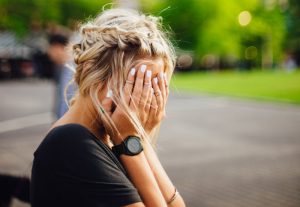
*
Content theft runs rampant on social media. It’s utterly annoying in many cases.
Sites like Pinterest are often used by criminals who capitalize on stolen content.
On Pinterest this often amounts to bait and switch – an ages old scam tactic.
Yet it’s also common on Facebook, X/Twitter and other sharing platforms.
How can you spot whether content has been stolen? I show you below.
How people make money by tricking others
Fraudsters lure people by using popular images and link to their online stores or using Amazon affiliate links.
Thieves who make money off other people’s work!
They often use images or videos without attribution.
Sometimes they also text with no credits to the
- original artist
- photographer
- writer/author
Content thieves make big bucks and they get away with it because nobody cares or notices.
Everybody just reshares due to the quality of the stolen content disregarding the actual source or rather lack of it.
In many cases these are duplicates found elsewhere on the same social site which were wildly successful before already.
So what are the most common ways to spot stolen content?
- It has no source link or a misleading one (to an unrelated page).
- It does not mention the name of the content creator.
- It has no or just a general description with no context (like “how cool is this”?)
So it’s not rocket science. Whenever I see the traits above I already know that the cute cat pics etc. are stolen.
A more detailed list of signs that content is stolen is further below.
With animals it’s most often the case. People just share something because it’s cute. They don’t ask who’s cat is it.
Content theft spotting tools
Are there any tools that allow you to spot stolen content? Yes.
“Just google it.” No kidding. There are also more specialized tools.
I often use search by image tools like
- TinEye reverse image search
- Google Lens (click the “search by image” icon on Google.com)
- or Pinterest image search (click “Explore” in the bottom right corner of any image)
to check for original images.
For text you can always check CopyScape.
Yet I usually just search Google or rather Ecosia and other alternatives to find text that has been copied.
Simply take a chunk of the text, half a sentence suffices usually and search for it.
This way I recognize quotes that have been used without attribution to get popular.
In the age of AI and copy and paste tools like ChatGPT content also gets rewritten or recreated in a similar way
Then you can’t even recognize the original immediately.
Dealing with content theft the right way
As I’m an art lover for years now and I recognize many of the artists whose work has been stolen.
It is often misappropriated for advertising revenue and presented as “interesting images” or something generic like that.
I will then add the original source in the comments or reviews but to no avail in most cases.
It takes time to research the real source but people still share the stolen content in the meantime.
To make things worse I even engaged with a stolen content piece myself and made it popular on social media this way.
Algorithms love comments – no matter what they say – and thus “outing” content theft just contributes to its success.
Ideally you just report stolen content and do not engage with it at all. Instead I research the original source.
Once I’ve found the content creator behind a piece of content I share it from the original source with proper credits.
Why do even influencers share stolen content?
I noticed that even some of social media’s most active influencers share stolen content. How come? Why do they do it?
When I once notified such an influencer of the actual content piece in question he had shared he replied:
“I had no way of knowing that”.
That’s true. It’s often an additional step to find out who the source is. Most people are just too lazy or careless to do it.
People are not always ignorant or complicit – they usually just don’t notice that content is stolen.
Signs the content you view is stolen
Thus I decided to set up a list of signs that in many cases allow you to spot content theft on social media and elsewhere.
Usually at least three of them apply.
- No attribution, credits or proper context. The “source” link is often misleading
- “Source” hosted on third party site like Pinterest, Reddit or Imgur or another crappy user generated content platform
- Site linked is full of ads above the fold, you have to scroll to see the actual content
- Large list of images from one source apparently you have to scroll down forever
- No attribution to artist or source, or something like “Images found on Pinterest” with no links
- Very broad description like “interesting images“, “fun stuff”, “cool art”, “creative design”
- No name of blog author or journalist to be found – about page is often missing altogether
- A Google search for the title or search by image will show several identical shares on social sites as well as several sites with the same title or image
- Content promoted on social media numerous times already, often by the same user or group of people or users with no avatar/real identity
- Spelling errors in the description and use of simplistic language
- No context, seemingly random posts that have no real connection to each other on the same account and/or site
When you spot content which shows these signs of being stolen just don’t share it or vote it up.
Of course not all users of Pinterest are content thieves etc.
Some platforms like WordPress.com e.g. are much more strict in the case of content scraping or manual copying.
In case your content has been stolen you might also want to read the 10 ways to fight back content thieves post.
* Photo by Mitchell Orr on Unsplash








